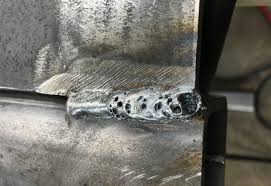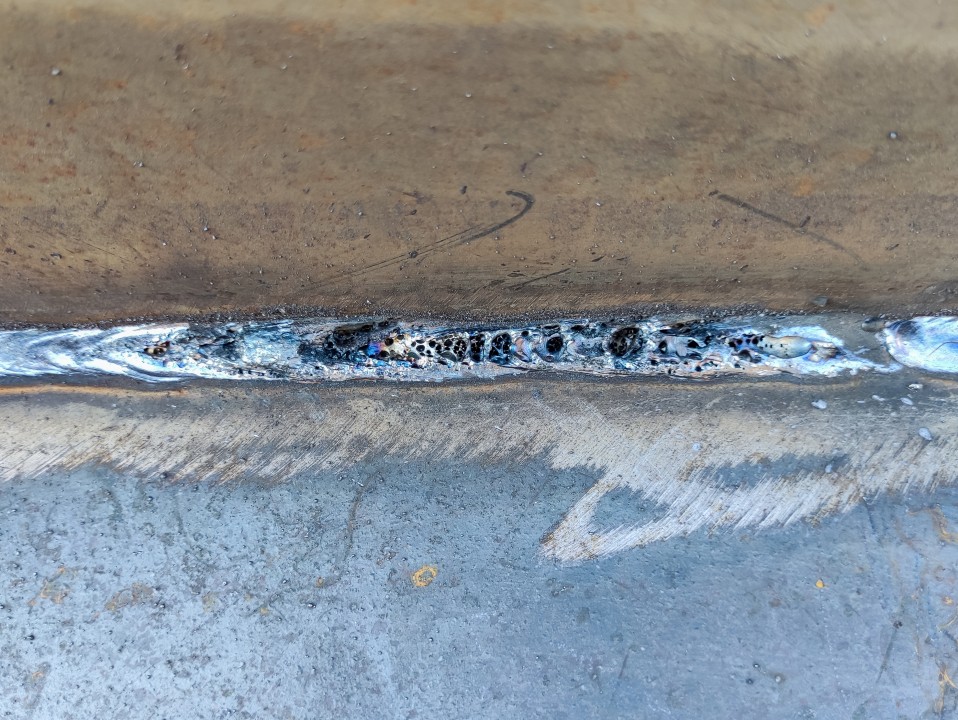Porosity in Welding: Identifying Common Issues and Implementing Best Practices for Prevention
Porosity in welding is a pervasive problem that often goes undetected till it triggers significant issues with the stability of welds. In this discussion, we will certainly check out the key aspects adding to porosity development, examine its detrimental impacts on weld performance, and talk about the finest practices that can be taken on to minimize porosity incident in welding processes.
Usual Reasons For Porosity

Utilizing unclean or damp filler products can introduce pollutants into the weld, contributing to porosity issues. To alleviate these typical reasons of porosity, comprehensive cleansing of base steels, appropriate securing gas selection, and adherence to ideal welding parameters are vital methods in accomplishing high-quality, porosity-free welds.
Impact of Porosity on Weld Top Quality

The visibility of porosity in welding can substantially endanger the architectural stability and mechanical residential or commercial properties of bonded joints. Porosity develops spaces within the weld steel, compromising its total toughness and load-bearing capability.
Welds with high porosity levels have a tendency to display lower effect stamina and minimized ability to warp plastically prior to fracturing. Porosity can hamper the weld's ability to efficiently transfer pressures, leading to premature weld failing and prospective security dangers in critical frameworks.
Finest Practices for Porosity Avoidance
To improve the architectural integrity and high quality of bonded joints, what certain procedures can be executed to reduce the occurrence of porosity during the welding procedure? Using the proper welding technique my explanation for the details product being welded, such as readjusting the welding angle and weapon placement, can further protect against porosity. Routine evaluation of welds and instant remediation of any kind of issues recognized during the welding procedure are essential methods to protect against porosity and produce high-grade welds.
Relevance of Appropriate Welding Strategies
Executing proper welding methods is critical in making sure the architectural honesty and top quality of welded joints, building upon the structure of reliable porosity prevention steps. Too much heat can lead to boosted porosity due to the entrapment of gases in the weld swimming pool. Additionally, utilizing the proper welding parameters, such as voltage, current, and travel rate, is critical for achieving sound welds with minimal porosity.
Furthermore, the choice of welding procedure, whether it be MIG, TIG, or stick welding, should line up with the certain needs of the project to guarantee optimum outcomes. Proper cleaning and preparation of the base metal, in addition to picking the appropriate filler product, are likewise crucial parts of proficient welding techniques. By adhering to these best practices, welders can minimize the risk of porosity formation and create top notch, structurally audio welds.

Examining and Quality Assurance Procedures
Evaluating procedures are important to spot and stop porosity in welding, making sure the stamina and sturdiness of the final product. Non-destructive testing techniques such as ultrasonic screening, radiographic testing, and visual examination are generally employed to identify potential issues like porosity.
Conducting pre-weld and post-weld examinations is likewise crucial in keeping quality assurance standards. Pre-weld assessments involve validating the materials, tools settings, and sanitation of the workspace to avoid contamination. Post-weld examinations, on the other hand, analyze the final weld for any kind of problems, consisting of porosity, and over here confirm that it fulfills specified requirements. Applying an extensive top quality control plan that consists of thorough screening treatments and assessments is paramount to minimizing porosity issues and making sure the total high quality of bonded joints.
Conclusion
In verdict, porosity in welding can be a typical issue that affects the high quality of welds. By determining the usual root causes of porosity and applying best practices for prevention, such as proper welding article source methods and testing steps, welders can make sure top quality and reputable welds. It is necessary to focus on prevention techniques to lessen the incident of porosity and preserve the stability of welded structures.